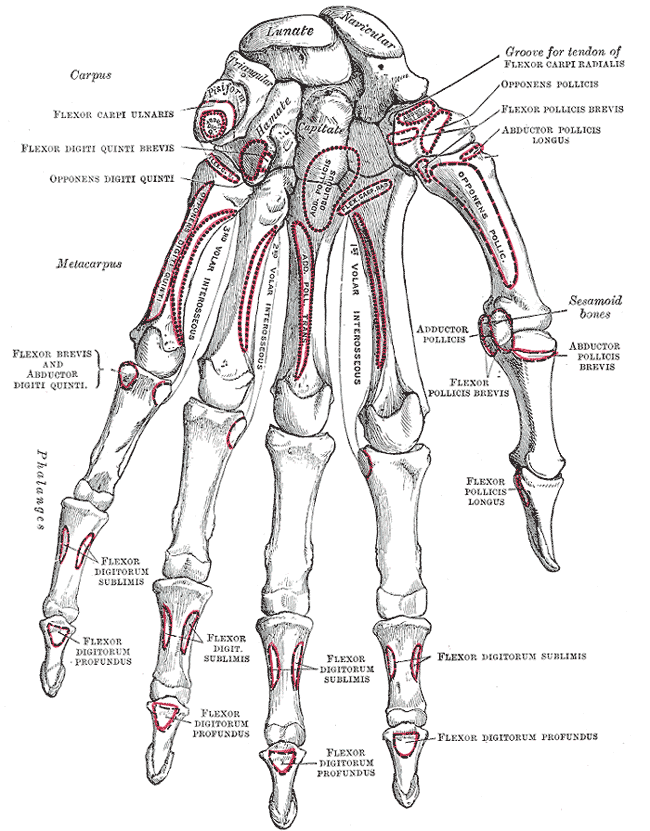Nikyo, Sankyo and yonkyo

 Worked one some of the techniques I needed for my 3rd Kyu exam and then the nikyo technique we practiced on Wednesday. The Sankyo and Yonkyo techniques are the two I need to work most on before my exam. In Nikyo and Sankyo, your uke attacks and you cut there hand down and then grab the hand and rotate it. In Sankyo you end up changing your grab so that their fingers point down and their elbow points up and your rotate the wrist causing the arm's joints to lock up and pain in the wrist joint. In Nikyo you roll the hand of uke around their own arm (as the center of rotation) and you bind up the wrist joint where the pisiform bone is. If you look at the tendons of the forearm, the same reason you need strong forearm strength for climbing--your grip actually comes from the deep muscles of the forearm--is how Aikidoka use your wrist to control your body. The joint locks take advantage of the fact that the fingers and wrist provide a nice fulcrum for tightening your tendons and ligaments so that you can bind up the next joint (the elbow) and so on.
Worked one some of the techniques I needed for my 3rd Kyu exam and then the nikyo technique we practiced on Wednesday. The Sankyo and Yonkyo techniques are the two I need to work most on before my exam. In Nikyo and Sankyo, your uke attacks and you cut there hand down and then grab the hand and rotate it. In Sankyo you end up changing your grab so that their fingers point down and their elbow points up and your rotate the wrist causing the arm's joints to lock up and pain in the wrist joint. In Nikyo you roll the hand of uke around their own arm (as the center of rotation) and you bind up the wrist joint where the pisiform bone is. If you look at the tendons of the forearm, the same reason you need strong forearm strength for climbing--your grip actually comes from the deep muscles of the forearm--is how Aikidoka use your wrist to control your body. The joint locks take advantage of the fact that the fingers and wrist provide a nice fulcrum for tightening your tendons and ligaments so that you can bind up the next joint (the elbow) and so on.
In second class we worked through the basic Bokken forms on my 3rd Kyu test and the next bokken form from the 2nd kyu test and the basic Jo forms on the 2nd kyu test. The bokken should move smoothly in a large arc when you strike. The last 6-8 inches are what do the cutting most of the time. This means that you want to accelerate that edge of the bokken and and provide the most kinetic energy at that point. Traditionally, in Japanese sword work you want your shoulders loose and relaxed and you raise the sword by moving your whole arm, with the sword as an extension of that movement. This makes the longest arc for the cutting point of the sword while not sacrificing speed and reaction time. You also want to start and stop the bokken cleanly (though you should always practice with the stop after you have completed a cut through the opponent). This actually requires a fair amount of forearm strength as you 'squeeze' the hilt bokken to stop the tip--but you are at a mechanical disadvantage when you do this. My strikes still often have too much 'bounce' at the end where the bokken's tip continues a bit past where I want it to stop and then returns. Sometimes we work out our arm strength by doing sword cuts with very heavy wooden bokken (like baseball players who take practice swings with a large weight on their bat). I'm sure it's good for building much of the same musculature needed for climbing.


3 comments:
Good point about the forearm muscles and grip; actually that's why you see a lot of soft tissue injuries in the fingers (ie. torn pulleys) and elbows: your muscle strength outgrows the ability of your ligaments and tendons to handle the forces.
The heavy bokken reminds me of heavy weapons training I used to do (bat with a 24oz weight attached to the end). Really brutal on the forearms, and it really made sure your shoulders weren't overly tense!
That is definitely the idea. I actually need to do more of the heavy bokken training--in a large part to make the motions more efficient and force the shoulders to relax... I wish I had room to practice in my apt or the lab, but it would be bad for the ceilings...
Post a Comment